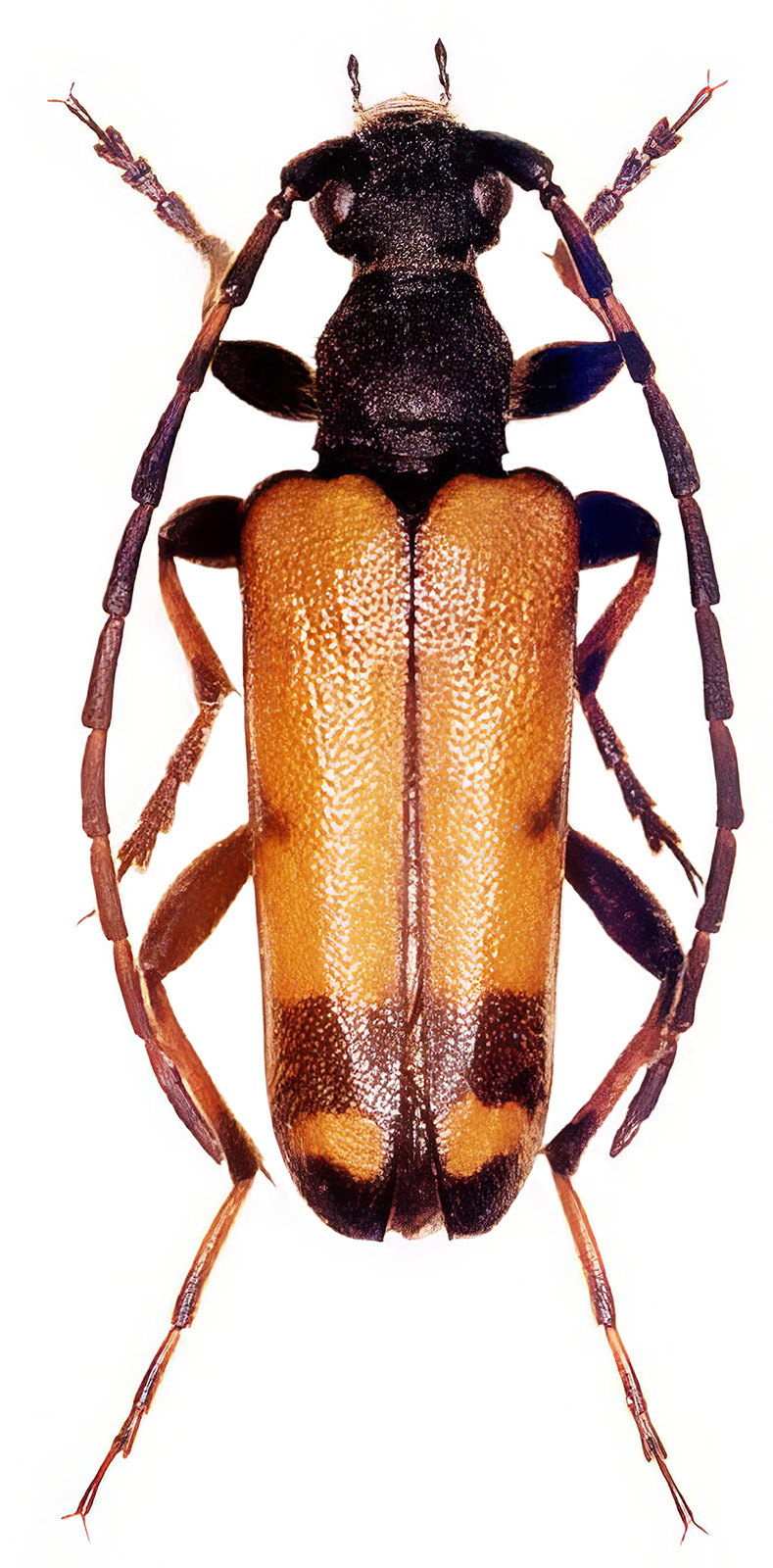The depicted beetle is probably the most mysterious European longhorn beetle. The first specimen of this interesting species has been collected in Romania
(Cibinului Mts.) and described as Grammoptera nigroflava by Carl Adolf Füss in 1852 [▽]. Since then no other finds of the species were
reported and therefore it was practically forgotten and ignored in the twentieth century. The species has only been mentioned in
"Fauna Republicii Populare Romine", Vol. X, Fasc. 5, (Panin et Savulescu), which appeared in 1961. In this work the species was cited as
Leptura (Anoplodera) nigroflava (Füss, 1852).
The second specimen has been found in a locality situated close to the type one (Lotrului Mts.) by a Czech entomologist
J. Skuhrovec on July 23, 1999. Afer study of both known specimens (the depicted one and the original type specimen described by Füss) was, based on the shape of the aedeagus, species transferred to the Holarctic genus Xestoleptura Casey, 1913. It is closely related to the Siberian species Xestoleptura rufiventris (Gebler, 1830), from which it is distinguished by the elytral sculpture, the shape of the pygidium as well as the shape of the parameres. The development of Xestoleptura nigroflava is unknown.
| Body length: | 12 - 14 mm |
| Life cycle: | unknown |
| Adults in: | July |
| Host plant: | larval development unknown |
| Distribution: | endemic to Romania |
The depicted male beetle was collected on plants at a mountain meadow near a coniferous forest at an altitude of ca 1600 m
circa 10 km north of the village Voinea in the Lotru Mountains (Munții Lotrului; Southern Carpathians, Vâlcea province, Romania).
[▽]
Füss C.A.:
Beitrag zur siebenbürgischen Insektenfauna.
Verhandlungen und Mittheilungen der Siebenbürgischen Vereins für Naturwissenschaften zu Hermannstadt 3: 73-80, 1852.
[download  ]
]
[❖]
Kadlec S. and Hájek J.:
Xestoleptura nigroflava, a new genus of longhorn beetles for Europe (Coleoptera: Cerambycidae: Lepturinae)
Folia Heyrovskyana 12 (4): 161-166, 2005.
[download  ]
]


